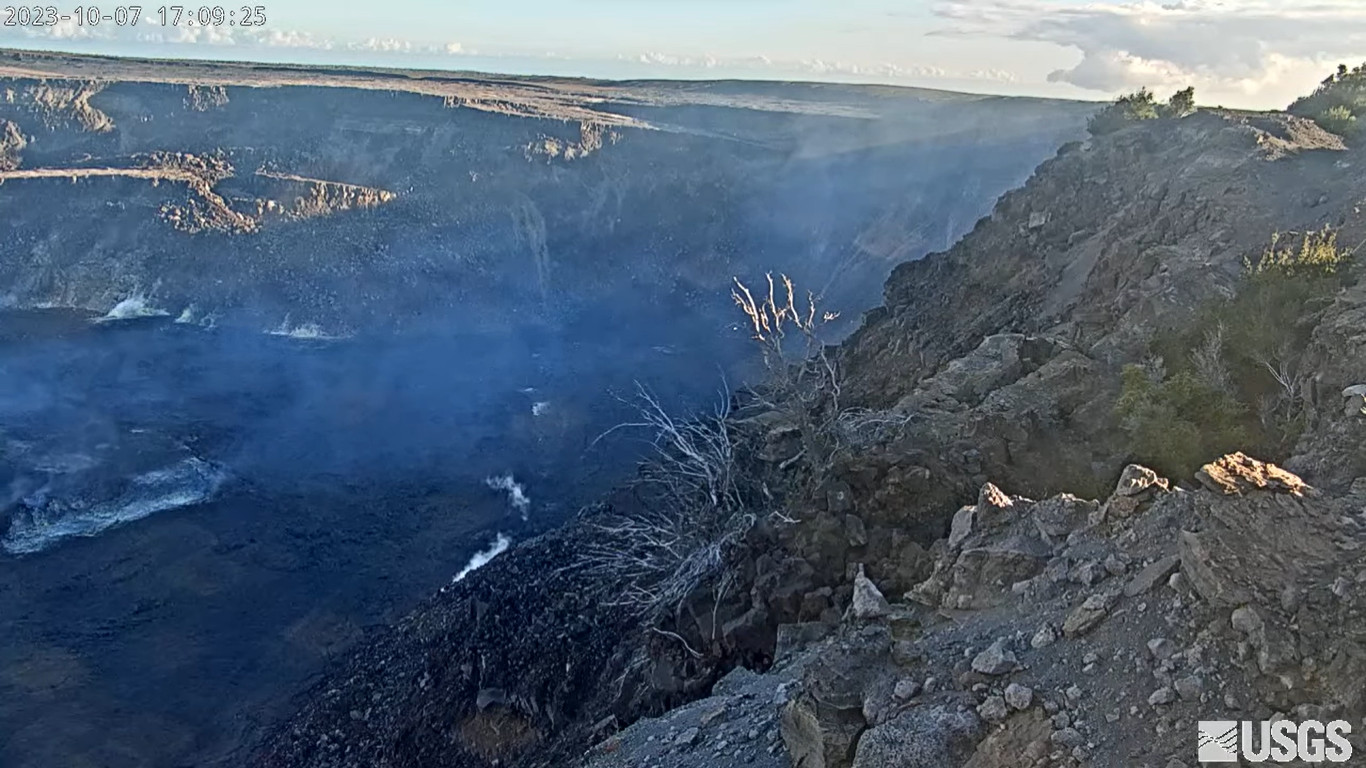(BIVN) – Kilauea is not erupting and the USGS Volcano Alert Level remains at ADVISORY.
Some of the recent signs of elevated unrest tapered off at 2 a.m. on Saturday morning, with a decrease in earthquakes and ground deformation in the area just south of the Kīlauea summit caldera. Previous to 2 a.m., the area had been exhibiting increased tilt and seismicity; enough to prompt Hawaiʻi Volcanoes National Park to initiate closures of certain trails and parking lots.
No unusual activity has been noted along Kīlauea’s East Rift Zone or Southwest Rift Zone.
From the USGS Hawaiian Volcano Observatory on Saturday morning:
Summit Observations: Ground deformation in the area just south of the summit caldera leveled off around 2:00 a.m. with no appreciable changes in the tilt since then. Inflation at the summit of Kīlauea remains close to its highest level in over 5 years and has nearly returned to the level seen just before the last eruption on September 10th. Seismicity beneath Kīlauea summit region, which began October 4, decreased around 2:00 a.m. and remains low at this time. Over the past 24 hours approximately 170 earthquakes were recorded in Kīlauea summit region compared to about 320 earthquakes occuring over the previous day. Most of the earthquakes from the seismic swarm south of the caldera are at depths of around 2.5–3.5 km (1.5–2 mi) below the surface. The trend of the seismic activity parallels, but is slightly south of the December 1974 eruption vents. Sulfur dioxide (SO2) emission rates remain low and were measured at a rate of about 100 tonnes per day on October 6.
Observatory scientists will continue to issue daily updates on Kīlauea.


by Big Island Video News11:28 pm
on at
STORY SUMMARY
HAWAIʻI VOLCANOES NATIONAL PARK - Earthquakes and ground deformation in the area just south of the summit caldera leveled off around 2 a.m., scientists say.